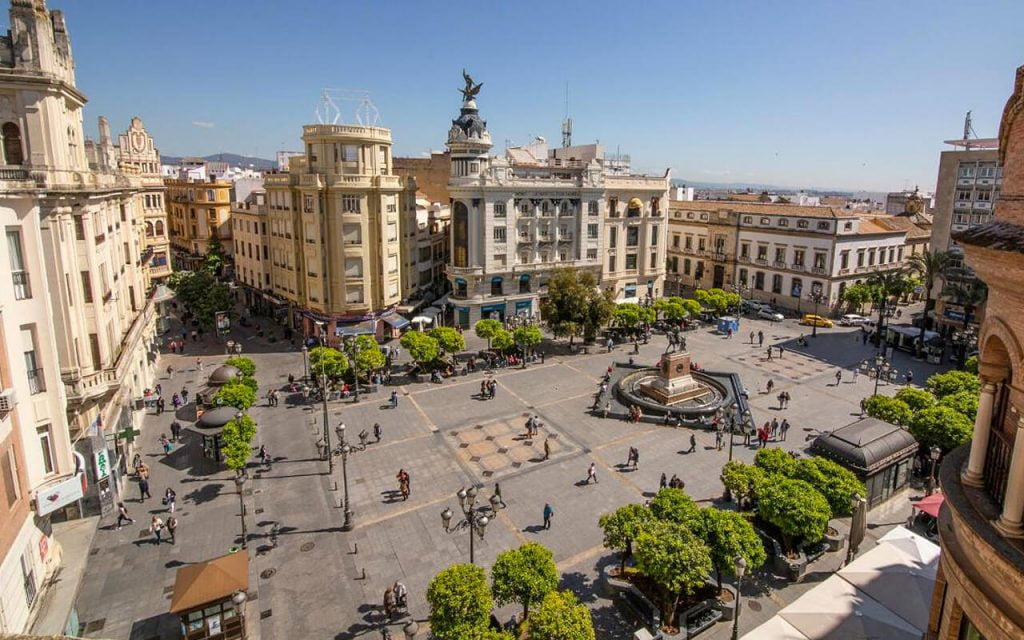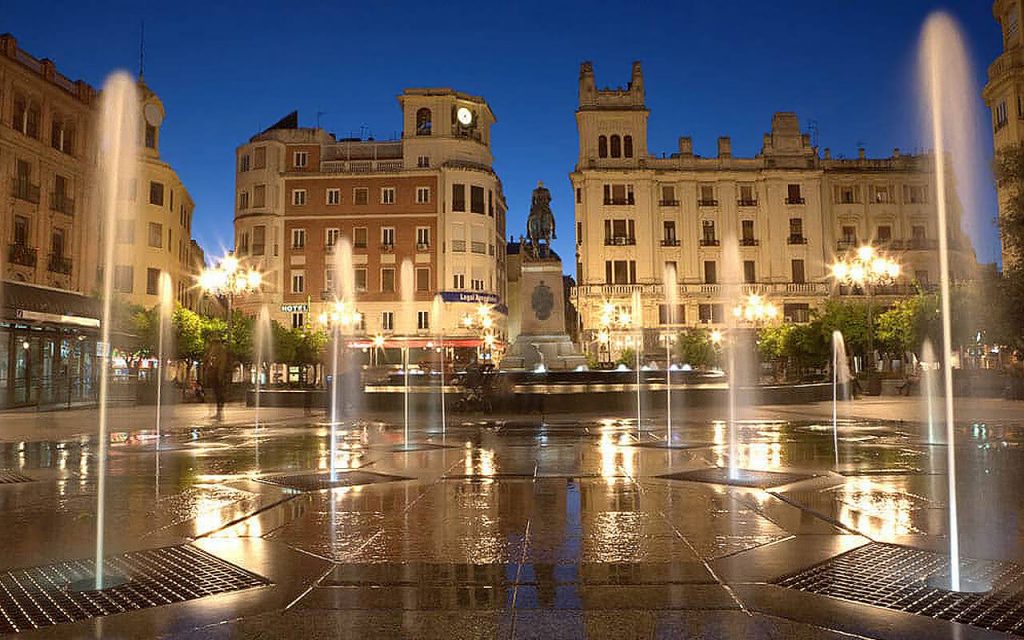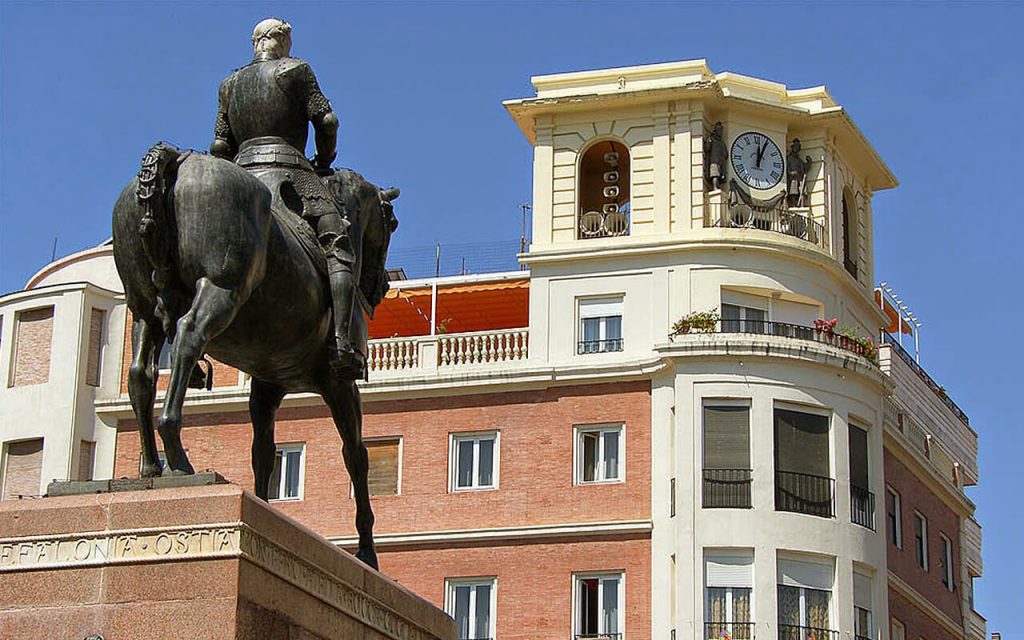Índice Contenido
In the heart of Cordoba, is the Plaza de las Tendillas. This central square hosts different events throughout the year, from celebrations to demonstrations, and is a common place to stroll that connects with the famous Jose Cruz Conde and Conde de Gondomar streets, where you can find a multitude of stores of all kinds, being the commercial center of the city.
Since 1927 you can find in its center the Gran Capitan monument, and since 1961, its characteristic clock that marks the hours with flamenco chords to Spanish guitar.
Thanks to its peculiarities, history and meeting point, the Plaza de las Tendillas is one of the most visited tourist places in the city of Cordoba.
Where is the Plaza de las Tendillas in Cordoba?
The Plaza de las Tendillas of Cordoba is located in the center of the city, being the boundary between the historic center and the commercial center of the city. It is located next to Cruz Conde and Conde de Gondomar streets, and close to other tourist attractions such as the Roman Temple and La Corredera.
Going to the Plaza de las Tendillas by bus
To go to Plaza de las Tendillas by bus you can take public transport lines 10 and 02. The nearest bus stops are:
- Conde de Gondomar Street
- José Cruz Conde Street
- Jesús María Street
- Duque de Hornachuelos Street
- Claudio Marcelo Street
- Diego de León Street
- Sevilla Street
- Victoriano Rivera Street
From any of these streets you can walk to the Plaza de las Tendillas and the center of Cordoba.

History of the Plaza de las Tendillas
The Plaza de las Tendillas dates back to the twenties of the twentieth century, at the hands of the mayor Don José Cruz Conde, who decided to demolish the old hotel Suizo in 1924. When they demolished this hotel, known by the name of “Suizo” due to its builders, the Puzzini brothers, a large free area was left, in which different buildings were built, many of which are still preserved today. Some emblematic buildings in the square are the house of Martín Fernández, represented by Enrique Tienda Pesquero and designed by Félix Hernández Giménez, a renowned architect.
Before a year had passed since its beginning, the Union and Fénix and Telefónica buildings were built in the northern part of the square. In 1928, in its southern part, the house of the Counts of Colomera and Enrique Barrios were built. The square ended with the Luis de Góngora Provincial Institute, built in 1847. Today, we can see different new buildings such as hotels, restaurants… that make the Plaza de las Tendillas an ideal place to stroll and enjoy the day.
One of its most characteristic tourist attractions is the equestrian statue of Gonzalo Fernandez de Cordoba, noble knight known as the Great Captain.
The name of the Plaza de las Tendillas is due to the craft stores that it used to contain years ago.

Plaza de las Tendillas Fountain
The characteristic fountain of the Plaza de las Tendillas was built in the twentieth century, more specifically in 1970. Its opening points towards Gongomar Street, at the hands of the architect Carlos Font. In the year 1980 a garden was put in its surroundings and it was not until 1999 when the remodeling of the square was completed. In this last remodeling, the fountain was replaced by a new one that consists of a black marble base with a curved overflow, where the water falls into a square-shaped outer enclosure finished in gray marble.
The fountain shows with more majesty the statue monument of the Great Captain of Cordoba, which is in its center raised by a pillar.
Monument Gran Capitán Cordoba
The statue of the Great Captain was created in 1923 by the sculptor Mateo Inurria. The sculpture was built in bronze, unlike the head, which is made of white marble. The “Great Captain” was Gonzalo Fernandez de Cordoba, a distinguished military man who got this name in the war against the Kingdom of Granada and the wars in Italy under the mandate of the Catholic Monarchs.
Its construction was long and had all kinds of adversities. Its author, Mateo Inurria, made three projects, being the last one the one he made in 1915.
Around this monument, there are different urban legends, from the fact that its head is not that of Gonzalo Fernandez de Cordoba, but that of a well-known bullfighter called “Lagartijo”. Another of its legends is that the material of the bust (marble) was due to the fact that the author was not paid the money agreed when he received the order, leaving the sculpture as it is today.

Clock of the Plaza de las Tendillas
The Clock of the Plaza de las Tendillas, is one of the most characteristic clocks that we can observe today. The clock was inaugurated on January 29, 1961, when the people of Cordoba gathered around 12 o’clock in the morning to welcome what has become the most characteristic clock of Cordoba. Together with the voice of Matías Prats and the chords of the clock composed by Antonio Valero, an event sponsored by Philips under the slogan “and there is no better”, it was a unique moment for those attending the event.
Its flamenco chords make it unique, and visitors are still surprised to hear a Spanish flamenco guitar in the center of Cordoba marking the hours. The clock has been located at the highest point of the Plaza de las Tendillas for more than 60 years.
Frequently Asked Questions about the Plaza de las Tendillas
Where is the Plaza de las Tendillas?
The Plaza de las Tendillas of Cordoba is in the heart of the city, being the boundary between the historic center and the commercial area. It is located next to the streets Cruz Conde and Conde de Gondomar, and close to other tourist attractions such as the Roman Temple and La Corredera.
When was the Plaza de las Tendillas built?
The Plaza de las Tendillas was built in the twenties of the twentieth century, when the then mayor Don José Cruz Conde decided to demolish the old Swiss hotel in 1924.
What's in the Tendillas square?
In the Plaza de las Tendillas we can appreciate, in addition to hotels and restaurants; buildings of characteristic architecture of the twentieth century, the central fountain, the statue of the Gran Capitan and the famous clock of the Tendillas.

